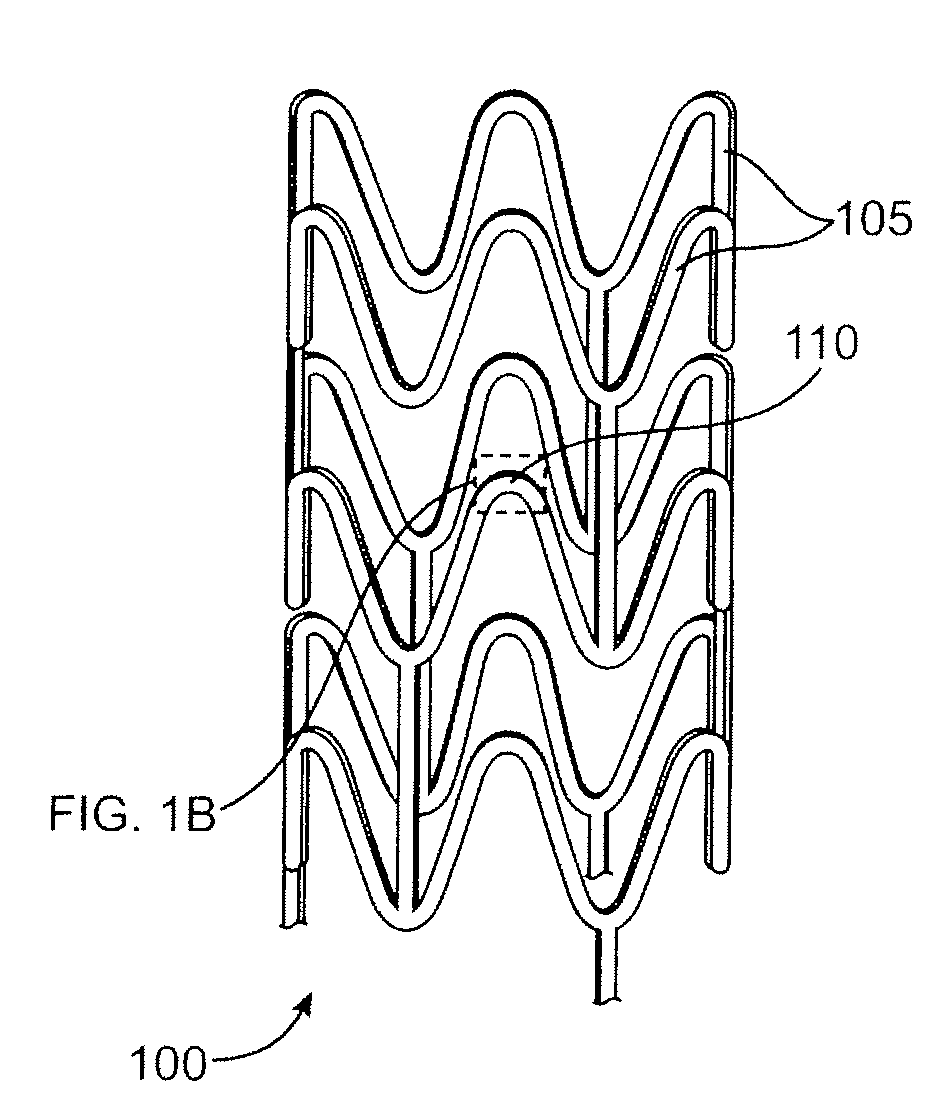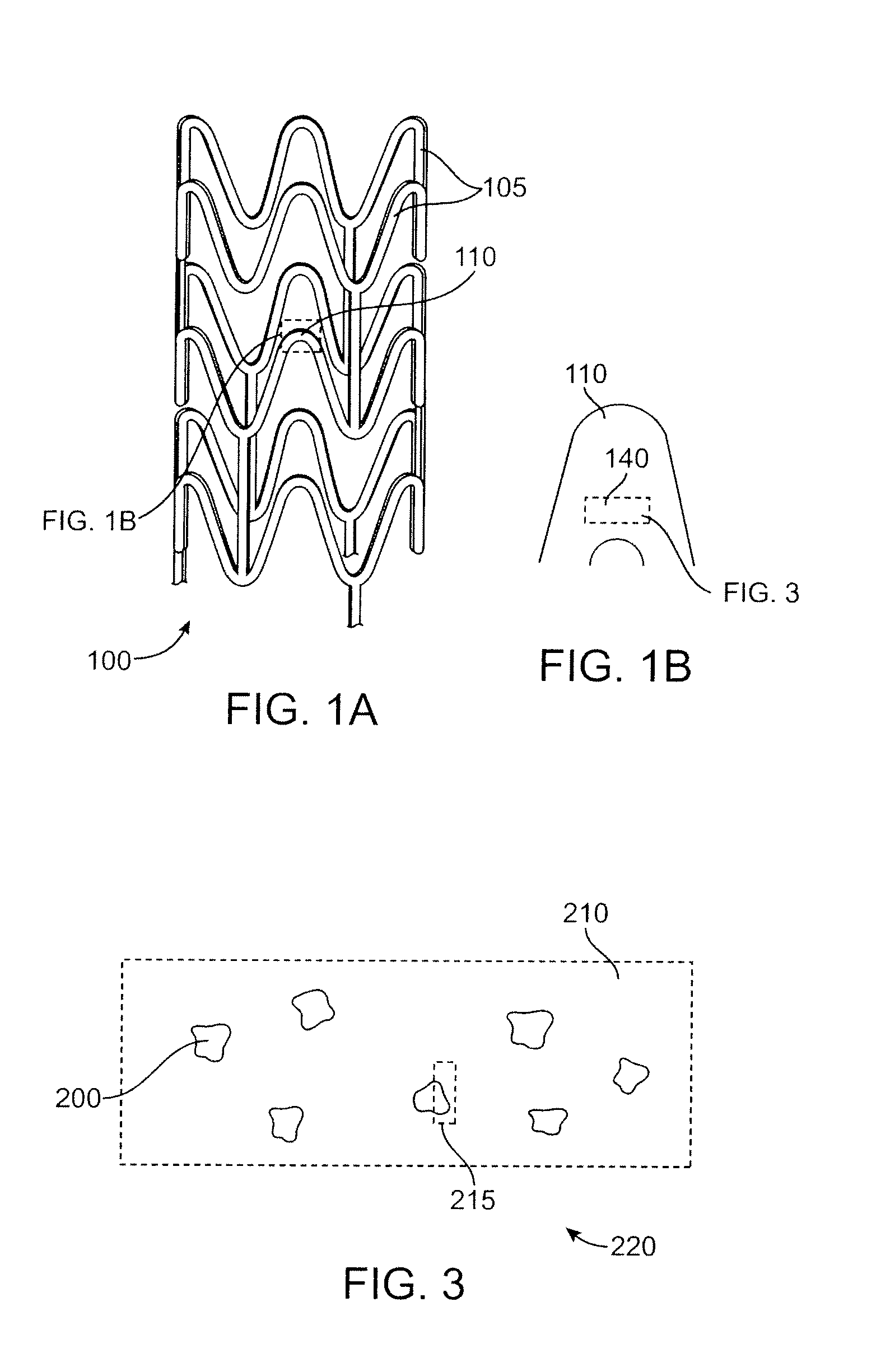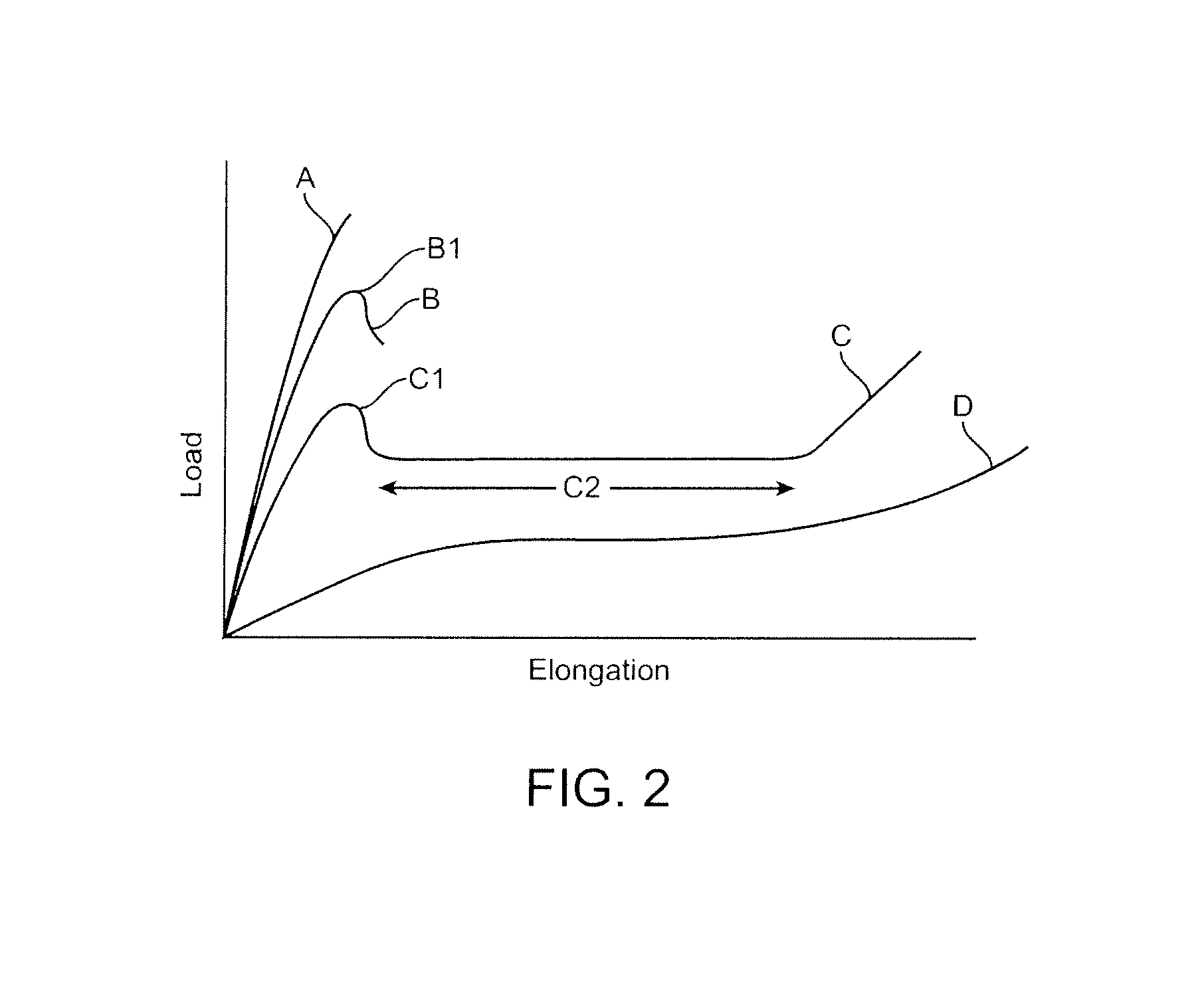Implantable medical devices fabricated from block copolymers
a technology of copolymer and medical devices, applied in the field of implantable medical devices, can solve the problems of insufficient toughness and slower degradation ra
- Summary
- Abstract
- Description
- Claims
- Application Information
AI Technical Summary
Benefits of technology
Problems solved by technology
Method used
Image
Examples
example 1
Synthesis of PDO-b-PLLA Block Copolymer with Short PDO and PLLA Blocks
[0119]FIG. 10 depicts the synthetic route of PDO-b-PLLA block copolymer preparation. The copolymer is synthesized in two steps. In the first step, dioxanone (monomer), alcohol (initiator), catalyst and solvent are added into a reactor free of oxygen and moisture. Once the first PDO block is formed, LLA is added into reactor to form the PLLA block. The following describes a detailed polymerization process:
Step 1: One 500 mL three neck glassware reactor with a mechanical stirring rod is placed in a glove box which is filled with high purity nitrogen. The reactor is preheated to remove all moisture.
Step 2: 20 g dioxanone (DO) as monomer, 0.04 mL dodecanol as initiator, 70 mL toluene as solvent and 0.12 mL stannous octoate as catalyst are added into the reactor. The mixture is stirred at 100° C. for 48 hours.
Step 3: 10 g LLA monomer is then added into a reactor and the solution is stirred for another 48 hours.
Step 4: ...
examples 2
, 3a-b, 4a-b illustrate synthesis of block copolymers with a long PLLA block and short fast eroding elastomeric homopolymer blocks
example 2
Synthesis of PLLA-b-PDO Diblock Copolymer with Long PLLA Block and Short PDO Block (See FIG. 8A)
[0121]In Example 2, dodecanol as initiator, dioxanone (DO), and L-lactide (LLA) as monomers, and stannous octoate as catalyst are used.
Step 1: 40 g DO, 372 mg dodecanol, and 100 mL xylene are added into a reactor free of moisture and oxygen. All chemicals are mixed through mechanical stirring and the solution is heated to 110° C. Then 140 mg stannous octoate is added and the solution is stirred for 24 h to form a short PDO block.
Step 2: 200 g LLA, 300 mL xylene and 562 mg stannous octoate are added into the reactor to form a long PLLA block.
Step 3: Approximately 48 h later, the final product is precipitated into methanol, and dried in a vacuum oven at 90° C. for 48 h or till constant weight.
PUM
| Property | Measurement | Unit |
|---|---|---|
| Tg | aaaaa | aaaaa |
| elongation | aaaaa | aaaaa |
| elongation | aaaaa | aaaaa |
Abstract
Description
Claims
Application Information
 Login to View More
Login to View More - R&D
- Intellectual Property
- Life Sciences
- Materials
- Tech Scout
- Unparalleled Data Quality
- Higher Quality Content
- 60% Fewer Hallucinations
Browse by: Latest US Patents, China's latest patents, Technical Efficacy Thesaurus, Application Domain, Technology Topic, Popular Technical Reports.
© 2025 PatSnap. All rights reserved.Legal|Privacy policy|Modern Slavery Act Transparency Statement|Sitemap|About US| Contact US: help@patsnap.com



